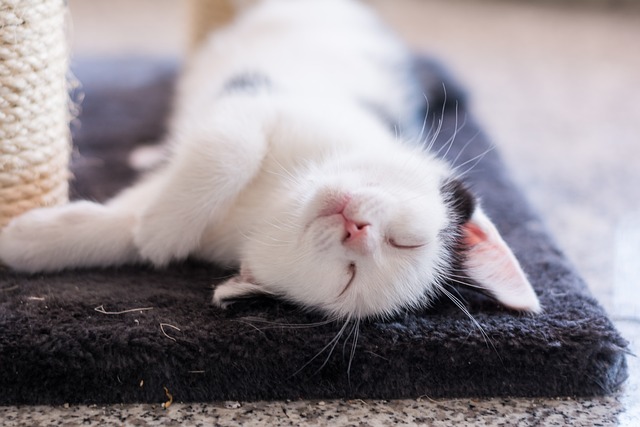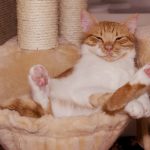Pica in cats is characterized by the persistent chewing, sucking, or consumption of non-food items like cardboard, fabric, paper, plants, plastic, rubber, soil, and wood. Although not very common, it poses serious health risks to cats, leading to stomach upset and potential blockages in the gastrointestinal tract, requiring surgical intervention.
Symptoms of Pica in Cats
The primary symptom of pica is the actual behavior of chewing, sucking, or ingesting non-edible materials. Cats exhibiting pica may also display the following symptoms:
- Vomiting
- Diarrhea
- Lack of appetite or thirst
- Constipation, straining to defecate
- Lethargy
Causes of Pica in Cats
Determining a single cause for pica can be challenging, as several factors may contribute:
- Behavioral conditions: Arising from anxiety, stress, boredom, or compulsion, the behavior can become obsessive over time.
- Early weaning or lack of socialization: More common in younger cats.
- Endocrine diseases: Such as diabetes mellitus, hyperthyroidism, anemia, and liver disease.
- Genetics: Certain breeds, like Siamese and Burmese, may have a higher predisposition.
- Gastrointestinal disease
- Neurologic disease
- Parasites and infections: Such as feline infectious peritonitis (FIP)
- Poor diet or malnutrition
- Pyruvate kinase deficiency: An enzyme deficiency leading to anemia.
- Teething-related difficulties
Diagnosis of Pica in Cats
Diagnosing pica involves ruling out underlying medical conditions. Veterinary attention is crucial, and screening tests, including bloodwork, urine testing, stool examinations, along with a detailed history and physical exam, are typically performed. There’s no specific test for pica, so a combination of tests may be needed for diagnosis.
Treatment of Pica in Cats
The treatment of pica in cats is often complex and multifaceted, requiring collaboration with a veterinarian. Some protocols that may help include:
- Diet: If nutritional deficiency is a factor, a high-quality, commercially fed cat food or prescription-based food may be recommended.
- Medication: Prescription medications can aid in eliminating or treating compulsive or anxiety-related behaviors. Regular monitoring through bloodwork may be necessary.
- Enrichment and Exercise: Providing new activities to engage or calm your cat, such as leash training, playing more often, or installing a “catio.”
- Reduction of Stress: Minimizing stress by ensuring easy access to essentials and positive cat-to-cat interactions. Calming products like Feliway may be helpful.
- Avoidance/Prevention: Pica-proofing your home by using barriers, closing trash cans, and using deterrents can prevent access to preferred items.
- Deterrents: No-chew sprays and loud noises can deter cats from engaging in pica behavior.
Natural Remedies
Limited research exists on the effectiveness of natural remedies for pica. Caution is advised with over-the-counter products, as cats can be sensitive to many substances. Always consult with a veterinarian before trying any home remedies.
Recovery and Management
Managing and treating pica in cats requires patience and close collaboration with a veterinarian. While the condition can be challenging, most cats can be effectively managed, and many kittens outgrow the behavior. Redirecting the behavior, limiting access to preferred items, and prompt veterinary attention if ingestion occurs are crucial for the well-being of the cat. Signs of gastrointestinal obstruction should be monitored vigilantly, and immediate veterinary intervention is necessary if observed.



